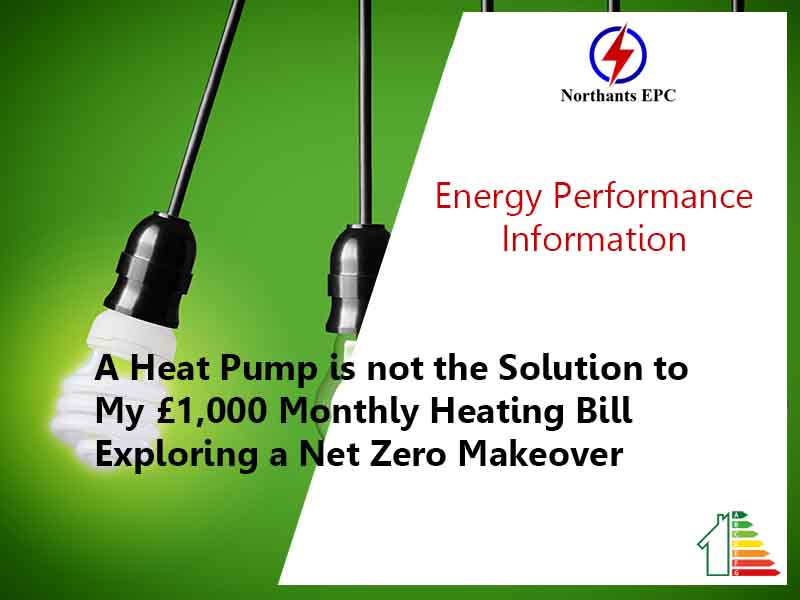A Heat Pump is not the Solution to My £1,000 Monthly Heating Bill – Exploring a Net Zero Makeover
As the slightly damp British summer draws to a close, households across the UK are gearing up for the impending drop in temperatures, which inevitably leads to increased energy consumption for heating. While energy costs have eased from their earlier peaks this year, the average household is still projected to shell out £1,959 annually for power bills, according to Cornwall Insight. But what if your energy expenses are far higher than that? What if you’re facing a £1,000 monthly heating bill? That’s the predicament Juliette Morgan found herself in.
Three years ago, when Juliette purchased her home in Somerset, she took pride in its use of renewable energy, powered by an electric boiler. This was in stark contrast to neighboring properties that relied on heating oil – a source the government is keen on phasing out by 2026. However, the green energy she championed came at a steep cost. When winter strikes, Juliette’s monthly heating bill skyrockets to an eye-watering £1,000.
The culprit behind this financial dilemma is her home’s construction – built with stone walls and floors that are slow to heat and expensive to insulate. Despite her commitment to renewables, the reality of the situation is that Juliette’s property has one of the lowest energy ratings possible, earning an F-rated energy performance certificate (EPC). It’s just one step above the lowest rank.
The prospect of renovating her home to improve its energy efficiency and subsequently slash her bills is daunting. The costs associated with such an endeavor are considerable, especially for a single homeowner. With the need to potentially replace windows, doors, and even the boiler, Juliette estimates that the total price tag could hover around £45,000.
Paul Ansell, an EPC assessor at Greenfish Consulting, sheds light on the unique challenges posed by Juliette’s property. The sandstone solid building, constructed before 1900, showcases a common wall build-up in the region. However, due to its thickness and composition, it offers insulating properties equivalent to a mere 15mm of Rockwool. In contrast, modern houses adhere to stricter insulation regulations, necessitating 150-200mm of Rockwool equivalence. The sandstone’s thermal mass further slows down the heating process, making the electric boiler work harder and longer to reach the desired temperature.
Addressing these issues comes with potential solutions. Internally insulating the walls using Celotex, albeit a more invasive approach, is recommended. This could cost between £4,000 and £14,000 but promises savings of around £600 annually, accompanied by a 12-point boost to the EPC. Single-glazed wooden windows, a source of substantial heat loss, could be replaced with UPVC double-glazed windows at an average cost of £3,300 to £6,500, leading to savings of £628 annually and a 7-point EPC increase.
With the roof space converted into occupied living space and adequately insulated, the absence of a gas supply in the area necessitates a specialized heating system. Juliette’s current setup relies on radiators powered by a “direct-acting” electric boiler, boasting 99.9% efficiency. An alternative proposed is an air source heat pump, promising higher efficiency and potential long-term savings. The installation could cost between £7,000 and £13,000.
Ian Mather, a renewable heat expert at British Gas, provides further insight. The property’s unique build, with its heat-retaining capabilities, offers comfort even without active heating for a few days. Unlike the direct electric boiler, a heat pump could achieve efficiencies exceeding 300%. For Juliette, the annual heating demand stands at 18,195 kWh. Comparing costs, the electric boiler amounts to £5,458, whereas a heat pump’s efficiency would bring it down to £1,819, yielding an annual saving of £3,639 and a lifetime saving of £54,585 over 15 years.
Considering an investment in a high-temperature heat pump, radiator upgrades, and a new hot water cylinder at around £14,000, the return on investment could materialize in less than four years. Notably, these calculations are based on average occupancy, while Juliette’s property registers lower electricity usage.
Ventilation and moisture management are essential aspects of this overhaul. Proper assessment and planning must be implemented to prevent moisture-related issues. Juliette’s observations of flagstone flooring sweating highlight the importance of moisture release during improvement projects.
The addition of a solar panel system, generating 2992 kWh annually, paired with a battery and optimized controls for the heat pump, could save £821 per year with an outlay of around £11,000. This combined solution could reduce carbon emissions from 10 tonnes to 2.1 tonnes annually, vastly improve the property’s EPC rating, and result in a more sustainable future for Juliette’s home.
In conclusion, the path to a net-zero home for Juliette involves careful consideration of her property’s unique characteristics and energy needs. While the initial costs may seem daunting, the long-term savings, increased comfort, and environmental benefits make the journey worthwhile. Whether it’s upgrading insulation, switching to a heat pump, or harnessing solar power, Juliette’s pursuit of an energy-efficient haven demonstrates that taking steps towards a greener future is not only possible but also financially viable in the long run.
